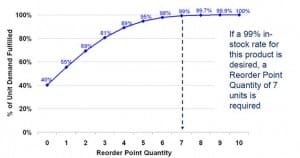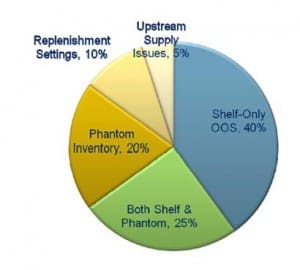Meet Google, your new supply chain and logistics technology provider.
According to a New York Times article, Google has started to test a same-day delivery service in San Francisco with some Google employees and their friends. At least one national apparel retailer is participating in the test, according to a source. Although Amazon and Walmart have made headlines in recent months with their own same-day delivery offerings (see “On Amazon’s Quest for Same-Day Delivery” and Walmart to Go), Google’s plan to offer this service was first reported last December in the Wall Street Journal. Here are some excerpts from that article:
Google is pushing back [on Amazon] with the quick-shipping service, and some retailers are interested in signing up for it, said people familiar with the matter. They said Google has pitched the project to big retailers that it has teamed up with in the past, a group that includes Macy’s Inc., Gap Inc., and OfficeMax Inc.
The quick-shipping service would be based on Google’s behind-the-scenes system that allows shoppers to figure out whether nearby stores have a product in stock and whether they can get that product shipped to them within a day. When shoppers place an order on participating retailers’ sites, Google’s system could kick in to offer them the option of same-day or next-day delivery, said a person familiar with the matter.
The effort could involve partnerships with shippers such as United Parcel Service Inc. and local courier companies, said people familiar with the matter.
Two quick takeaways: First, the success of Google’s approach will depend on the ability for retailers to provide customers searching online with accurate, real-time visibility to SKU inventory by store. This remains a big challenge for many retailers (see “Phantom Inventory Creates Havoc in Retail Supply Chains”), so unless retailers make significant improvements in store-level inventory accuracy, many customers will be scheduling same-day deliveries of products that aren’t available.
Second, it isn’t enough for Google’s system to determine whether it’s possible to ship a product within a day; the system should also balance the delivery costs incurred by the retailer with the pricing and time windows it offers customers to maximize profitability. For example, if a customer’s neighbor already has a delivery scheduled for 5:00-7:00 PM, the system should incentivize the customer to choose the same delivery window, which would allow both orders to travel on the same truck, thus minimizing the retailer’s delivery cost.
Shifting gears, earlier this month Google was issued a patent for a container tracking system. Here is the abstract:
Shipping containers are networked for transferring data between the shipping containers. The shipping containers include sensors for detecting conditions associated with the shipping containers. The conditions sensed by any shipping container whether transported by rail or ship is transmitted from an ad hoc network, via a gateway configured for satellite or cellular communications for example, to a container-tracking application server or equivalent computer system. The computer system is remotely located to the shipping container for central compilation, analysis, and/or display of data regarding the shipping containers.
Under “Field of the Invention,” the document says, “The present invention relates broadly to wireless transceivers, including the design of a wireless transceiver as well as to forming ad hoc networks with wireless transceivers and to communication protocols between wireless transceivers.” In other words, the invention includes wireless tags and readers and a way of networking them. Here is a use case example the document highlights:
A warehouse store such as Costco carries hundreds of brands of products. Nevertheless, all products need to be inventoried on a realtime basis. In accordance with the present invention, a Wireless Reader Tag is attached to each pallet of goods and assigned a class designation that denotes the manufacturer of goods on that pallet (e.g., Pillsbury, Sony, Kellogg’s, etc.). Each Wireless Reader Tag may also include in its class designation or profile, information about the goods on the pallet. Each boxes on the pallet carries a Wireless Tag that is read by the Wireless Reader Tag of the pallet. On demand, each Wireless Reader Tag gathers information about the Wireless Tags on its pallet and relays the information back to the asset-tracking application server. At any given time, an employee of the warehouse store can inventory goods of a selected manufacturer by sending a query that will be received only by Wireless Reader Tags of the selected class corresponding to such manufacturer. Messages directed to a selected class will not appreciably affect the battery life of Wireless Reader Tags of other classes, as only Wireless Reader Tags of the selected class will wake up from standby mode to receive the messages and process the query. The manufacturer classes can be divided further into categories and subcategories, thereby further collectively reduce battery consumption and radio interference.
I don’t know how this differs from systems currently offered by RFID technology vendors like Motorola Solutions and Savi Technology, but here’s my big picture takeaway: Google is paying attention to supply chain and logistics opportunities, and looking for ways to leverage its technology and intellectual property — including tablets and smartphones, which could serve as tag readers — to improve supply chain processes.
At the end of the day, I believe Google will partner with leading supply chain and logistics technology vendors to exploit these opportunities. And maybe in a few years we’ll have a clearer answer to a question I first raised in a February 2009 posting: If Google was in charge of your supply chain, what would it look like?



















